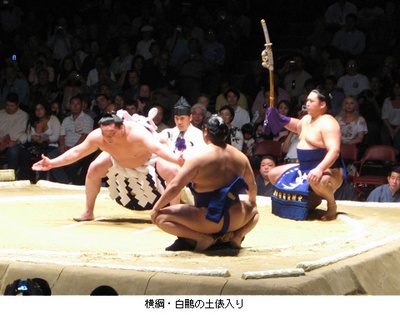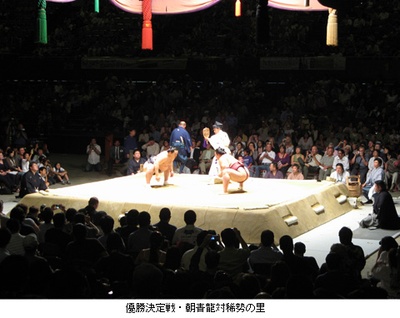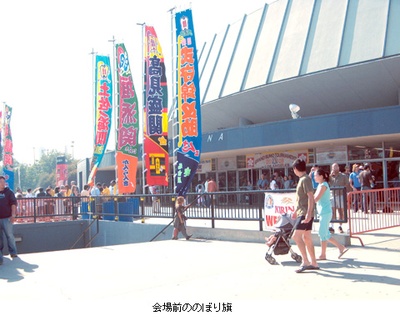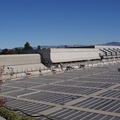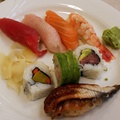On June 7th and 8th, the Los Angeles Grand Sumo Tour was held for the first time in 27 years at the Los Angeles Sports Arena. A total of 20,000 spectators came to watch Japan's national sport over the two days, cheering loudly as the wrestlers clashed in front of them in person.
"Wakanosato, la la la," a pair of white women chant in a jingle-like voice, cheering and clapping for Wakanosato, and the crowd responds with their own clapping. "Asashoryu," "Hakuho," these are the cheers of the Mongolian cheering squad, raising their national flags here and there. "Chiyotaikai!" "Kaio!" The crisp calls are Japanese, but unfortunately there aren't many cheers for Japanese wrestlers. No matter what kind of people you are, if the wrestlers aren't strong, it's not worth cheering for them.
Seventy percent of the audience were Asian. I thought most of the Asians were Japanese, but there seemed to be many Mongolian immigrants living in LA. They were enthusiastically supporting the seven Mongolian wrestlers, including the two Yokozuna Asashoryu and Hakuho. Asashoryu, who is known for his "bad deeds," seems to see a similarity in his fellow Mongolians in a foreign country, and visited a Mongolian school in LA and offered to make a donation. I think the fan service was outstanding among the 40 wrestlers who came this time.
The white audience was no less impressive. One man held up a sign that read "ASASHORYU YOU ROCK." Some people said they learned about the joy of sumo by watching "Ozumo Digest." It's now only broadcast on the pay TV Japan, but in the past it was broadcast on the Japanese terrestrial channel. Japanese culture has spread to Americans in unexpected ways. Whether they've seen sumo on TV or just came out of curiosity, Americans are really good spectators. When the outcome of a long bout was decided, fists were raised all over the place and people jumped up from their chairs. Some even gave a deep salute saying "I'm done!". It's not like it's a Lakers game, but the audience was really into it. Even Asashoryu, the overall winner, was in high spirits after the standing ovation from the crowd. The sullen-faced Yokozuna was so excited that he asked for a high-five himself.
On the other hand, the Japanese spectators. There were many Japanese families at the venue, but they didn't have a strong presence, as they didn't fly the Japanese flag or the Stars and Stripes. I wonder how much cooperation there was with the Japanese community. A year ago in May, before the LA tour was officially decided, the organizing committee, including the promoter and Hawaii-based businessman Shigemitsu Inohana, came to LA to ask for the cooperation of the local Japanese community. Perhaps there were misunderstandings on both sides, but I hear that the results were not good. Tickets were slow to sell, and I remember that when the Japan Sumo Association sent a group of wrestlers to inspect the venue in March of this year, they were in a very angry mood, saying, "There's no progress at all." However, when the event was held, the average number of visitors per day of 10,000 was a "full-cap" compared to the size of the venue for the main tournament, such as the Kokugikan in Japan. The Japan Sumo Association was also pleased, saying, "It was a tour with good attendance" (Oshima Tour Director, former ozeki Asahikuni). This was due in large part to the efforts of Japanese companies, as well as to enthusiastic advertising activities that were also carried in the Los Angeles Times just before the event.
"Thank you for coming today. See you again." Yokozuna Asashoryu gave his closing greeting in English. "Sumo is fun" - that reputation will surely be conveyed to LA. The Japan Sumo Association is also serious about touring overseas. That's why they want even more enthusiasm from the Japanese community at the next LA tour. Long ago, Japanese people loved sumo so much that there was even a sumo ring in Little Tokyo. The quietness of the Japanese community this time is not entirely unrelated to the decline of LA's Japantown.
© 2008 Yumiko Hashimoto


